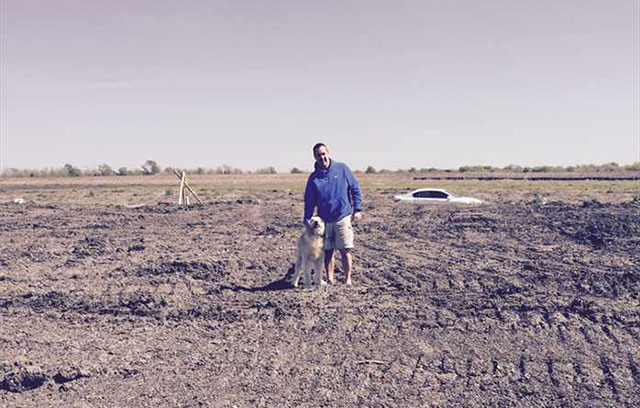The experts from PetRelocation share tips and advice for transitioning pets into a new home. Visit myLennar Scrapbook to share your pet’s special new home moments and see what others are sharing from Lennar neighborhoods across the country.
Moving to a new home is a physically draining and often emotionally challenging experience, and anyone with a pet knows that furry family members can feel the stress of a relocation, too. Whether moving across town or across the world, it’s important to help your pets settle in so that your new place can start feeling like a warm home as soon as possible.
Here are a few tips to keep in mind during the transition to a new home.
Safety First

Before you start attending to smaller details, make sure you have the big basics covered. To prevent escapes, secure the perimeter of the yard if your dogs will be spending time outside. Because cats tend to be a little more skittish after a move, consider keeping them confined to one room at first and then gradually opening the rest of the home to them as they become more relaxed.
Get to Know the Neighborhood

Take dogs on a leashed walk as soon as you can in order to let them get the lay of the land and start to feel connected to their new territory. If your cat is used to being outdoors, supervise the first few outings to make sure they know where home base is. These activities may also provide the chance to meet your new neighbors.
Unpack and Relax

Help your pets settle into your new digs by placing plenty of familiar objects (such as their beds and toys) in common areas of the home where they can easily come across them and benefit from their familiarity. Make sure potential comfort zones are cleared of boxes and easily reachable – discovering a sunny window perch or a cozy corner could make all the difference to a cat or dog looking to find security in their new surroundings.
Establish a Routine

Place food and water bowls in a place that makes sense to your pets and establish a regular feeding schedule. Devote plenty of time to walking, exercising and playing to help nervous dogs and cats burn off extra energy. Try to stay as consistent and engaged as possible as you work towards building a predictable family routine.
Prepare for your Best Future

As soon as you can (ideally even before you move), find out about local pet stores, vets, dog parks and vaccine rules as necessary. Knowing exactly where to go for your preferred pet food and being prepared to stay in line with local health ordinances will help you take good care of your pets while at the same time reducing your own stress.
Though moving can be a challenging experience for your pets, you may be surprised by how quickly they start to feel settled when you exercise patience and embrace a few smart practices.
Remember: to pets, home is wherever you are.

Caitlin Moore works for PetRelocation, a pet travel company that provides door-to-door pet transportation services to countries around the world.




